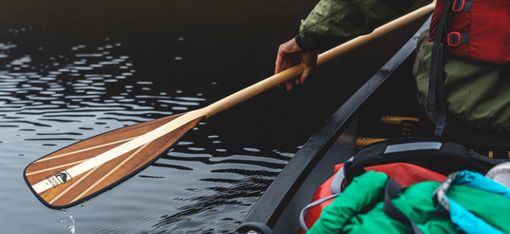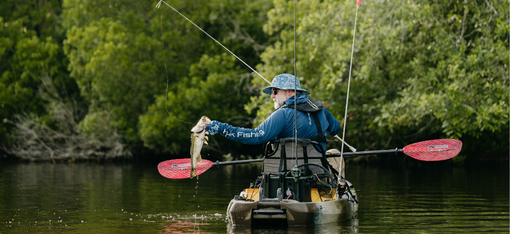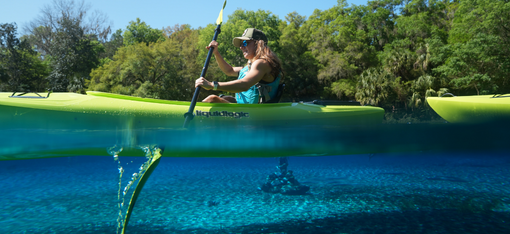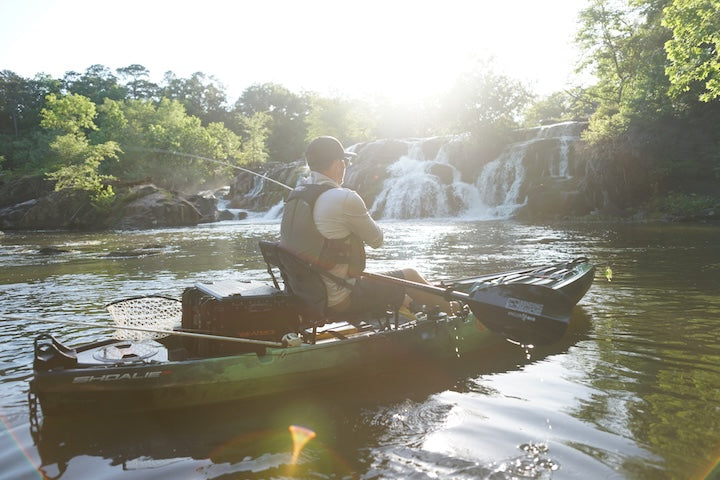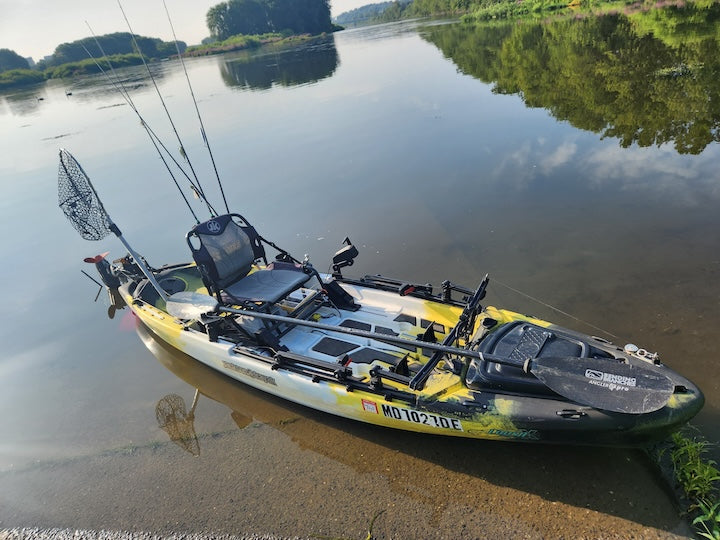Is Canoeing Harder than Kayaking?
5-minute read
By Sharon Brodin
If you’re a new paddler, the short answer is: yes, canoeing is harder than kayaking.
In no way does that mean you shouldn’t give canoeing a try, though…and learn to kayak, too! But if you must choose between the two, most beginners find kayaking easier to learn.

Becoming a proficient canoeist takes practice (Photo courtesy of Five2Nine)
(NOTE: While I’m by no means an elite paddler of either canoes or kayaks, I’ve been paddling canoes actively since 1987 and kayaks since 2007. My husband and I have raised three kids who are now adults, and we taught them all how to paddle. And I bring a lot of friends with me canoeing and kayaking, many of whom have never paddled before. So I’m basing my assessment on life experience and observation.)
For our purposes here, we’ll use the most common scenarios of both canoes and kayaks: a tandem canoe with two people and a single recreational kayak (whether sit-inside or sit-on-top) with one person. And we’ll assume it’s on flatwater—lakes of a normal size.
The main reasons why I consider canoeing harder than kayaking are:
- Canoes are more technical to steer
- Canoes are more susceptible to wind and wind gusts
- Canoes have a higher center of balance
Let’s dig into each of these:
Canoes are More Technical to Steer than Kayaks
I can’t tell you the number of times I’ve been on a canoe trip—whether just a few miles or a multi-day wilderness trip—and witnessed canoes zig-zagging down the lake rather than heading straight for their destination.
This was me, too, in my earliest days of canoeing. The best thing that happened with my early canoe career was a 5-day Boundary Waters trip where we paddled 12-15 miles a day in all types of conditions. Nonstop practice!
A typical tandem canoe is 16-17 feet long. The paddler in the stern (back) does the bulk of the steering. Every stroke on the right pushes the nose of the canoe a titch to the left, and vice versa. If the bow paddler (in front) uses just the right amount of strength, then you have the right balance to counteract that slight titch. But that hardly ever happens.
So there are some important strokes—starting with the J-stroke—to learn that will keep your canoe heading where you want it to go. It takes time and practice to learn these steering strokes.

Even young children can learn to kayak quickly and easily (photo courtesy of @mrseasttexaskayakfishing)
On the other hand, a single recreational kayak (9-12 feet long), paddled with the double-bladed kayak paddle, can be steered accurately without really knowing any “real” strokes at all. I’ve put 6-year olds in my kayak and sent them out on the water. They were able to paddle around and get back just fine (I wouldn’t send 6-year-olds out in our canoe!).
Kayakers sit in and steer from the middle of their boat while canoeists are steering from the back. The physics of the paddle strokes simply work differently.
Canoes are More Susceptible to Wind and Gusts than Kayaks
Canoes are shaped differently than kayaks, with higher sides and ends. That extra square footage gives them ample chances to catch the wind and get blown around.
A calm, peaceful day with glassy water won’t be much of a problem. The strokes you’ve learned will accomplish the task admirably. (That, by the way, is the best kind of day to learn and practice steering a canoe—calm!)
But on windy days it’s a different story. It can be hard work to keep your canoe in line and on track. It’s even harder if you haven’t mastered your strokes yet.
I still remember when I got my recreational kayak after a couple decades of canoeing. I had it out on the lake on my first windy day and thought, “Wow! This is EASY compared to canoeing in the wind!”
The combination of more wind resistance and being trickier to steer makes canoes more difficult to handle in blustery weather.
Canoes Have a Higher Center of Balance than Kayaks
A canoe’s higher center of balance also plays into the difference between the two types of boats in the wind. Not only is more canoe against the wind, the people in the canoe are higher, and therefore catching more wind.
For recreational canoeing, the folks in the front and back sit on the seats, which is several inches above the floor of the canoe. In a kayak, though, you’re sitting much closer to the floor of the boat, even on the floor, lowering your center of balance by quite a bit.

Most new paddlers feel very comfortable in a rec kayak very soon (photo courtesy of @adventurepaddletours)
That lower center of balance offers less wind resistance and also gives you better stability, especially in waves. So if you worry a bit about tipping, you’ll feel more comfortable in a kayak as a new paddler.
The Best Scenario: Learn to Paddle Both Canoes & Kayaks
Canoes and kayaks have distinct features that make each a joy to paddle for different reasons.
With canoeing, I suggest asking a canoeist friend to teach you, or take a few local courses with a certified instructor. That individual instruction is so helpful, along with plenty of practice. A multi-day trip is a super way to get in a ton of experience right off the bat.
When the time comes that you’re interested in paddling more technical waters—like the ocean and other big water, rivers with rapids—that’s the time to get more technical with your kayaking, too.

Canoe skills, once learned, lead to a lifetime of fun on the water (photo courtesy of Sharon Brodin)
Enjoy the water!
Do you have paddle questions our friendly Customer Service Team can help you with today? Contact them: 715-755-3405 • [email protected]
More for you...




